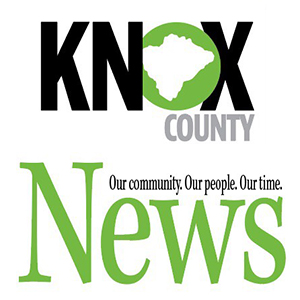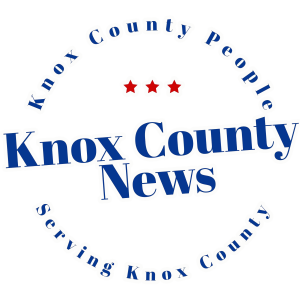
WASHINGTON, DC — Among congressional priorities included in the 2018 Consolidated Appropriations Act that was signed into law last week, is nearly $4 billion to combat the nation’s public health emergency on opioid abuse. It invests billions in treatment, prevention and law enforcement efforts to stem the rapid rise in deadly overdose deaths. In 2016, more than 42,000 Americans lost their lives as a result of a drug overdose.
“The federal response largely reflects the multi-faceted approach that Operation UNITE has successfully utilized over the last 15 years to hold drug dealers responsible, help addicts gain access and support for treatment, and prevent drug use through education in our communities and schools,” said Rogers, Co-Founder and Co-Chair of the Congressional Caucus on Prescription Drug Abuse. “Today, like every day, approximately 115 Americans will die of a drug overdose, and we simply must remain vigilent in our efforts to combat the epidemic from every angle. This legislation will ensure that our professionals and community advocates have the resources they need to help save lives and change the course for future generations.”
In an effort to raise awareness about America’s opioid epidemic, Operation UNITE will help host the 7th annual National Rx Drug Abuse and Heroin Summit next week, April 2-5, 2018 in Atlanta, Georgia. It is now the largest national conference addressing the growing global opioid crisis, drawing federal, state and local leaders, including both public and private sectors, and advocates from around the world.
Anti-Drug Funding
Together we’ve made progress combatting drug abuse in Southern and Eastern Kentucky and across the Commonwealth, but more must be done to curb ever-increasing drug overdose rates and put people on the path to recovery. Consequently, this bill achieves record funding levels to comprehensively support local, state, regional and federal efforts to combat addiction and drug trafficking, including:
Drug Enforcement and Criminal Justice Activities
The bill includes significant increases in law enforcement, prosecution agencies and grant resources for state and local criminal justice entities.
- $2.1 billion is included for the Drug Enforcement Administration (DEA), $419.5 million of which is specifically allocated to combat the diversion of prescription drugs. $10 million is provided to support state and local law enforcement efforts to clean up methamphetamine labs, and $8 million is continued for Anti-Meth Task Forces.
- $542 million is provided for Interagency Crime and Drug Enforcement, and the bill provides $280 million for the High Intensity Drug Trafficking Areas (HIDTA) program to assist federal, state, and local authorities clean up trafficking hot-spots, which will enable the Appalachian HIDTA to continue its work in southern and eastern Kentucky.
- The bill also includes $236 million for the National Guard Counter-Drug program, an increase of $120 million from the President’s request and $2 million more than the FY17 level. The Kentucky National Guard Counter-Drug program is among the best in the nation, and has eradicated millions of dollars of illegal drugs.
- Byrne Justice Assistance Grants are funded at $415 million, an increase of $109 million from the FY17 level. This funding will support all components of the criminal justice system, including drug and gang task forces to domestic violence programs, treatment, and justice information sharing. Overall, it will help keep Kentucky safe.
- For Drug Courts, the bill includes $164 million for the Department of Justice (DOJ) and Department of Health and Human Services (HHS) to help non-violent offenders struggling with addiction. An additional $20 million is included for Veterans Treatment Courts to help our men and women in uniform who are struggling with addiction. Activities under the Second Chance Act are also funded at $85 million.
Treatment
Over $4 billion is included for treatment services alone, across a broad spectrum of programs within the federal government.
- Most notably, over $5 billion is provided for the Substance Abuse and Mental Health Services Administration (SAMHSA), including a $1 billion increase for its treatment programming and a $25 million increase to its prevention programming.
- The bill also provides an additional $105 million to allow National Health Service Corps members to deliver Substance Use Disorder treatment services to our communities.
- The bill also appropriates more than $475 million for the Centers for Disease Control (CDC) to continue its Opioid Prescription Drug Overdose Prevention program – more than double the amount appropriated last year.
- The legislation also encourages HHS to facilitate training of healthcare professionals and paramedics and to increase access to emergency devices, like Naloxone, and allocates.
Prevention, Recovery and Research
- The legislation provides $30 million to implement and enhance Prescription Drug Monitoring Programs (PDMPs), which help doctors make good prescribing decision and investigators root out bad actors.
- $99 million is approved for the Drug Free Communities Program, which provides funding to community-based groups seeking to prevent youth substance abuse. $119 million is available for a Strategic Prevention Framework, which provides prevention professionals a comprehensive process for addressing the substance misuse and related behavioral health problems facing their communities.
- $7.434 million is provided specifically for Recovery Community Services Program and Building Communities of Recovery to support those in their journey to overcome addiction.
- The National Institute for Health (NIH) is slated to receive an overall increase of $3 billion increase for life-saving research, $500 million of which is focused on efforts to combat opioid addiction.
To learn more about Kentucky-related highlights in the FY18 Consolidated Appropriations Act, visit halrogers.house.gov .













